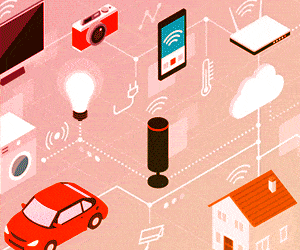Here we are going to discuss the frequently asked questions about Microelectronics. Below are the topics that we will cover.
1. What Is Microelectronics? 2. Benefits of Microelectronics 3. Microelectronics Circuits 4. What are the Challenges in the field of Microelectronics? 5. What is the difference between Microelectronics and Electronics? 6. Are Microelectronics and VLSI the Same? 7. Are Microelectronics and MEMS the Same?
What Is Microelectronics?
Microelectronics is a field of electronics engineering that deals with the design and fabrication of small electronic devices, such as microprocessors, using techniques such as photolithography. These devices are typically fabricated using microelectromechanical systems (MEMS) or microelectronic mechanical systems (MEMS), which are small structures that can be integrated into electronic circuits.
One key aspect of microelectronics is the use of semiconductor materials, such as silicon, to create the small structures and devices that are needed. Semiconductor materials are characterized by their ability to conduct electricity under certain conditions, making them useful for a wide range of electronic applications.
Benefits of Microelectronics
One of the main benefits of microelectronics is the ability to create devices that are smaller, faster, and more energy efficient than traditional electronic devices. This is because microelectronic devices can be made using smaller dimensions and can operate at higher speeds due to the reduced distances that electrical signals need to travel.
In addition to microprocessors, other microelectronic devices that are commonly used include sensors, actuators, and memory devices. These devices are used in a wide range of applications, including consumer electronics, medical devices, automotive systems, and military systems.
Microelectronics Circuits
One of the key benefits of microelectronic circuits is their ability to pack a large number of components and functions into a small space, which allows for the creation of highly compact and efficient devices. In addition, microelectronic circuits can operate at high speeds due to the reduced distances that electrical signals need to travel.
However, the design and fabrication of microelectronic circuits can be challenging due to the small dimensions and the need to accurately control the placement and interconnection of the various components. This requires the use of advanced computer simulations and testing methods, as well as the development of new materials and fabrication techniques.
What are the Challenges in the field of Microelectronics?
One major challenge in the field of microelectronics is the need to continually improve the performance and capabilities of microelectronic devices while also reducing their size and cost. This requires the development of new materials and fabrication techniques, as well as the use of advanced computer simulations and testing methods.
What is the difference between Microelectronics and Electronics?
In general, microelectronics focuses on the design and fabrication of small electronic devices, while electronics encompasses a wider range of topics related to the study and application of electronics.
Are Microelectronics and VLSI the Same?
VLSI is a subfield of microelectronics that focuses on the design and implementation of very large-scale integrated circuits (ICs). These ICs are used to create complex electronic systems, such as microprocessors, that contain millions of transistors and other components on a single chip.
In general, microelectronics encompasses a wider range of topics related to the design and fabrication of small electronic devices, while VLSI focuses specifically on the design and implementation of very large-scale integrated circuits.
Are Microelectronics and MEMS the Same?
MEMS is a subfield of microelectronics that focuses on the design and fabrication of small mechanical devices that can be integrated into electronic systems. These devices are typically created using the same techniques and materials used in microelectronics, such as photolithography and semiconductor materials.
In general, microelectronics encompasses a wider range of topics related to the design and fabrication of small electronic devices, while MEMS focuses specifically on the design and fabrication of small mechanical devices that can be integrated into electronic systems.
So basically Microelectronics, VLSI, and Microelectromechanical Systems (MEMS) are related but distinct fields within electronics engineering.
Overall, microelectronics plays a vital role in the development of modern electronic systems and devices and is an important area of research and development in the field of electronics engineering.






